The Design and Optimization of a Highly Sensitive and Overload-Resistant Piezoresistive Pressure Sensor
Abstract
:1. Introduction
2. Experimental Section
2.1. Structural Design
2.2. Structural Analysis
2.3. Fabrication
2.4. Package and Measurement
3. Results and Discussion
3.1. Experimental Results
3.2. Discussion
4. Conclusions
Acknowledgments
Author Contributions
Conflicts of Interest
References
- Tian, B.; Zhao, Y.; Jiang, Z. The design and analysis of beam-membrane structure sensors for micro-pressure measurement. Rev. Sci. Instrum. 2012, 83. [Google Scholar] [CrossRef] [PubMed]
- Berns, A.; Buder, U.; Obermeier, E.; Wolter, A.; Leder, A. Aero MEMS sensor array for high-resolution wall pressure measurements. Sens. Actuators A Phys. 2006, 132, 104–111. [Google Scholar] [CrossRef]
- Mackowiak, P.; Schiffer, M.; Xu, X.; Obermeier, E.; Ngo, H.D. Design and simulation of ultra-high sensitive piezoresistive MEMS sensor with structured membrane for low pressure applications. In Proceedings of the Electronics Packaging Technology Conference (EPTC), Singapore, 8–10 December 2010; pp. 757–761.
- Reynolds, J.K.; Catling, D.; Blue, R.C.; Maluf, N.I.; Kenny, T. Packaging a piezoresistive pressure sensor to measure low absolute pressures over a wide sub-zero temperature range. Sens. Actuators A Phys. 2000, 83, 142–149. [Google Scholar] [CrossRef]
- Ko, H.S.; Liu, C.W.; Gau, C. Micropressure sensor fabrication without problem of stiction for a wider range of measurement. Sens. Actuators A Phys. 2007, 138, 261–267. [Google Scholar] [CrossRef]
- Yu, H.; Huang, J. Design and Application of a High Sensitivity Piezoresistive Pressure Sensor for Low Pressure Conditions. Sensors 2015, 15, 22692–22704. [Google Scholar] [CrossRef] [PubMed]
- Huang, X.; Zhang, D. A high sensitivity and high linearity pressure sensor based on a peninsula-structured diaphragm for low-pressure ranges. Sens. Actuators A Phys. 2014, 216, 176–189. [Google Scholar] [CrossRef]
- Su, C.C.; Li, C.H.; Chang, N.K.; Gao, F.; Chang, S.H. Fabrication of high sensitivity carbon microcoil pressure sensors. Sensors 2012, 12, 10034–10041. [Google Scholar] [CrossRef] [PubMed]
- Zheng, W.; Zhao, G. Design and analysis of MEMS sensor. In Proceedings of the IEEE International Conference on Future Information Technology and Management Engineering (FITME), Changzhou, China, 9–10 October 2010; pp. 327–330.
- Tufte, O.N.; Chapman, P.W.; Long, D. Silicon diffused-element piezoresistive diaphragms. Appl. Phys. 1962, 33, 3322–3327. [Google Scholar] [CrossRef]
- Kurtz, A.D.; Mallon, J.R.; Nunn, T.A. Semiconductor Transducers Employing Flexure Frames. U.S. Patent 4236137, 25 November 1980. [Google Scholar]
- Shimazoe, M.; Matsuoka, Y.; Yasukawa, A.; Tanabe, M. A special silicon diaphragm pressure sensor with high output and high accuracy. Sens. Actuators 1982, 2, 275–282. [Google Scholar] [CrossRef]
- Bao, M.; Yu, L.; Wang, Y. Stress concentration structure with front beam for pressure sensor. Sens. Actuators A Phys. 1991, 28, 105–112. [Google Scholar] [CrossRef]
- Johnson, R.H.; Karbassi, S.; Sridhar, U.; Speldrich, B. A high-sensitivity ribbed and bossed pressure transducer. Sens. Actuators A Phys. 1992, 35, 93–99. [Google Scholar] [CrossRef]
- Timoshenko, S.; Woinowsky-Krieger, S. Theory of Plates and Shells, 2nd ed.; McGraw-Hill: New York, NY, USA, 1987. [Google Scholar]
- Shimizu, I.; Yamada, K. Manufacturing Semiconductor Device Having a Pressure Sensor. U.S. Patent 4618397, 21 October 1986. [Google Scholar]
- Tian, B.; Zhao, Y.; Jiang, Z. The novel structural design for pressure sensors. Sens. Rev. 2010, 30, 305–313. [Google Scholar] [CrossRef]
- Voorthuyzen, J.A.; Bergveld, P. The influence of tensile forces on the deflection of circular diaphragms in pressure sensors. Sens. Actuators 1984, 6, 201–213. [Google Scholar] [CrossRef]
- Wang, Q.; Ding, J.; Wang, W. Fabrication and temperature coefficient compensation technology of low cost high temperature pressure sensor. Sens. Actuators A Phys. 2005, 120, 468–473. [Google Scholar] [CrossRef]
- Madou, M. Fundamentals of Microfabrication; CRC Press: Boca Raton, FL, USA, 1997. [Google Scholar]
- Doering, R.; Nishi, Y. Handbook of Semiconductor Manufacturing Technology, 2nd ed.; CRC Press: Boca Raton, FL, USA, 2008. [Google Scholar]
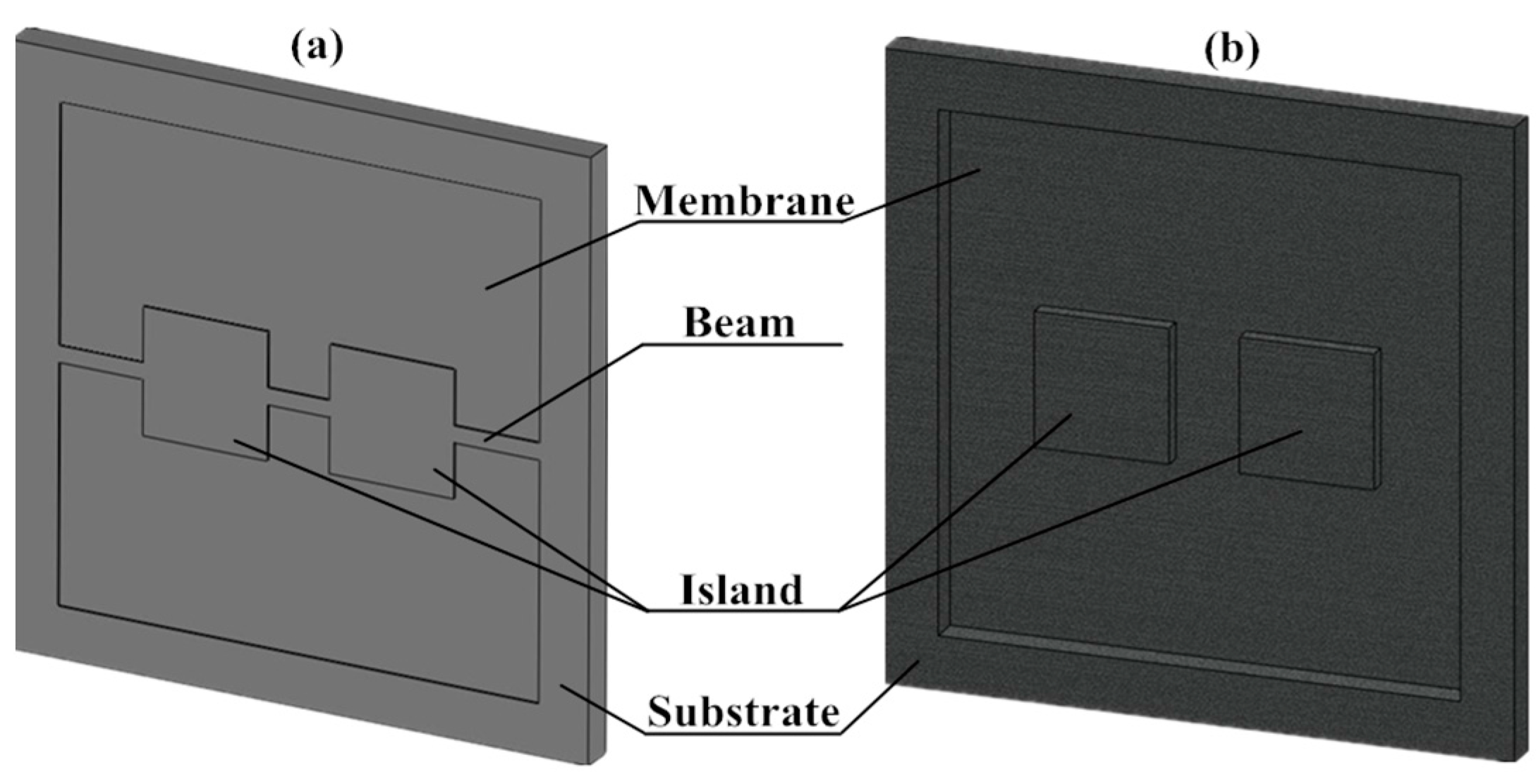

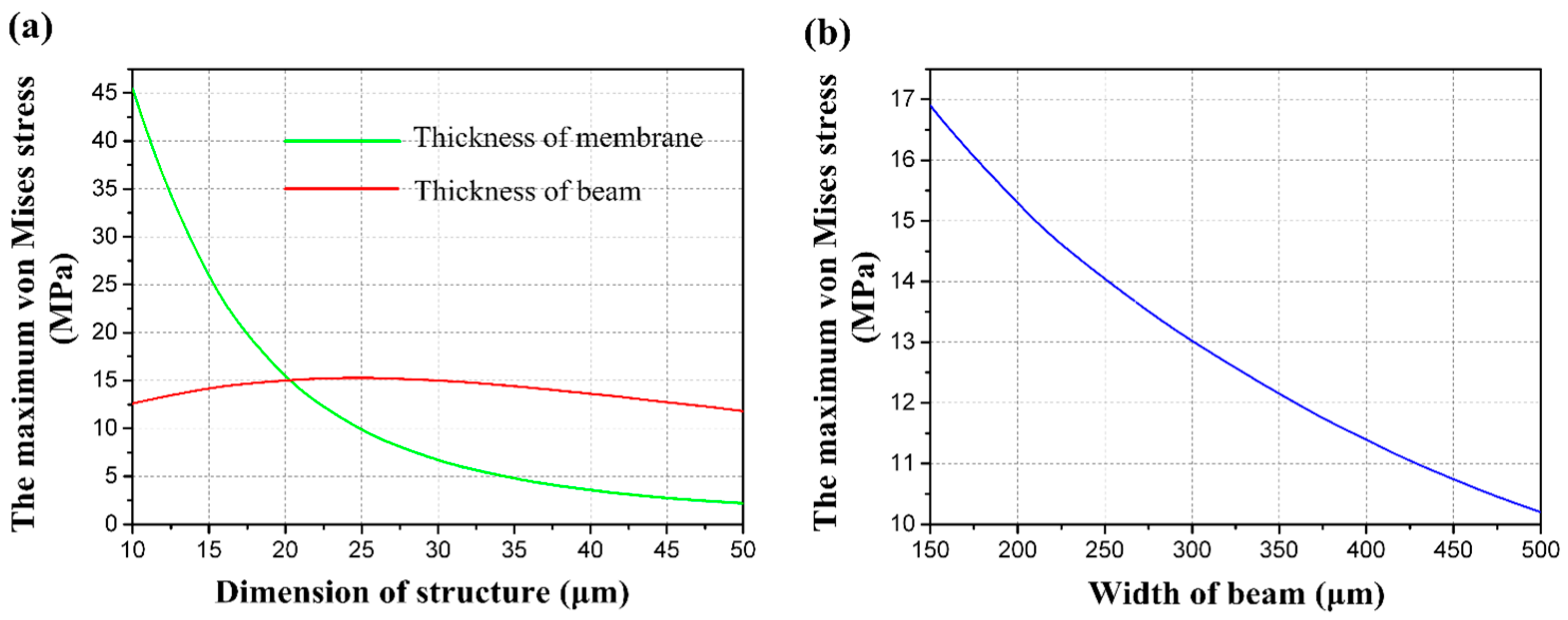
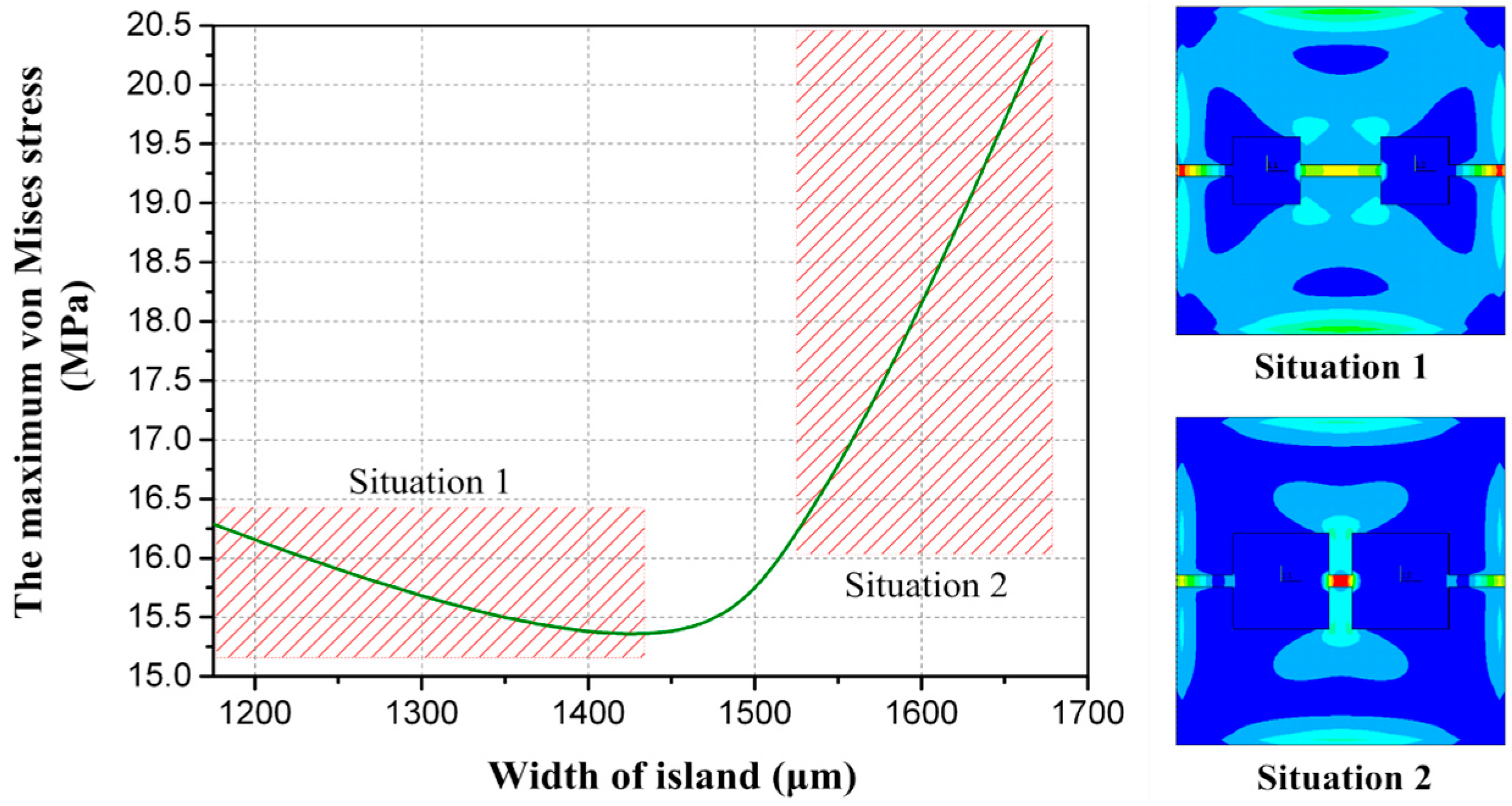

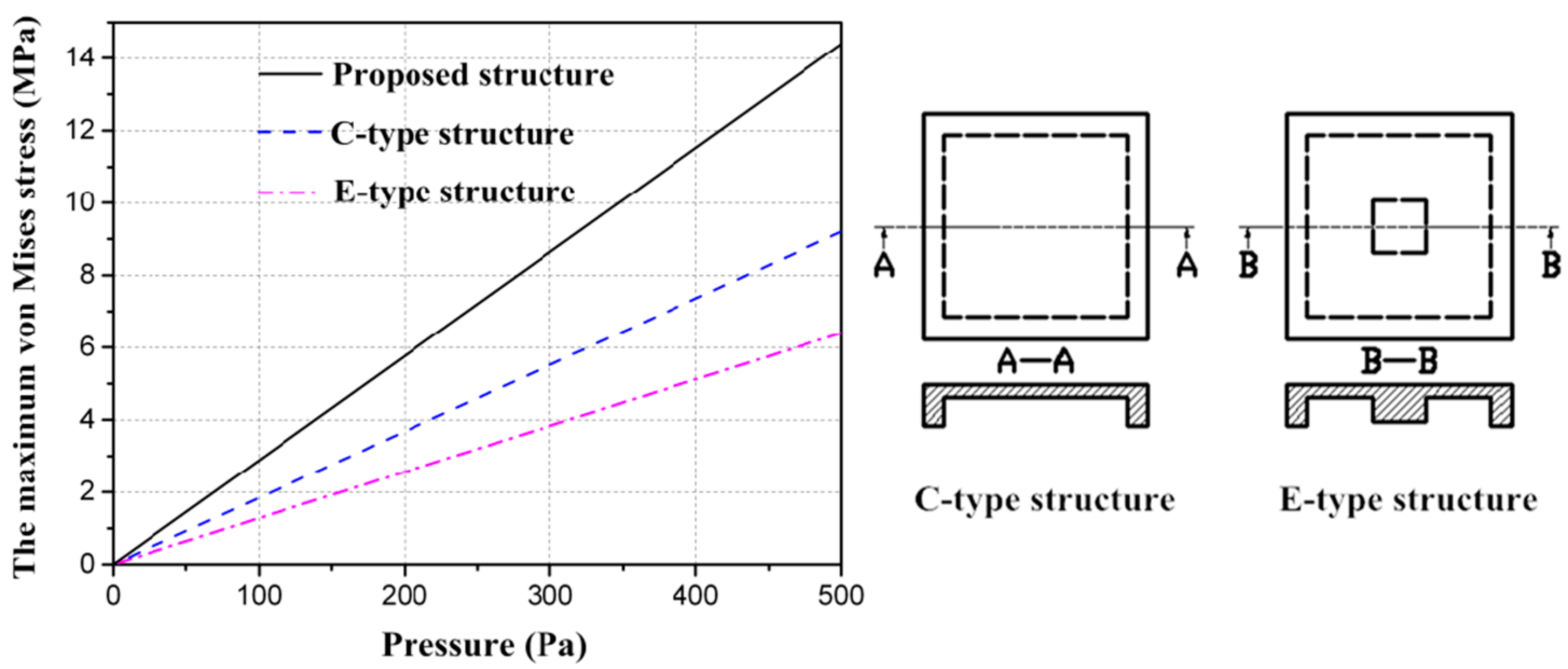




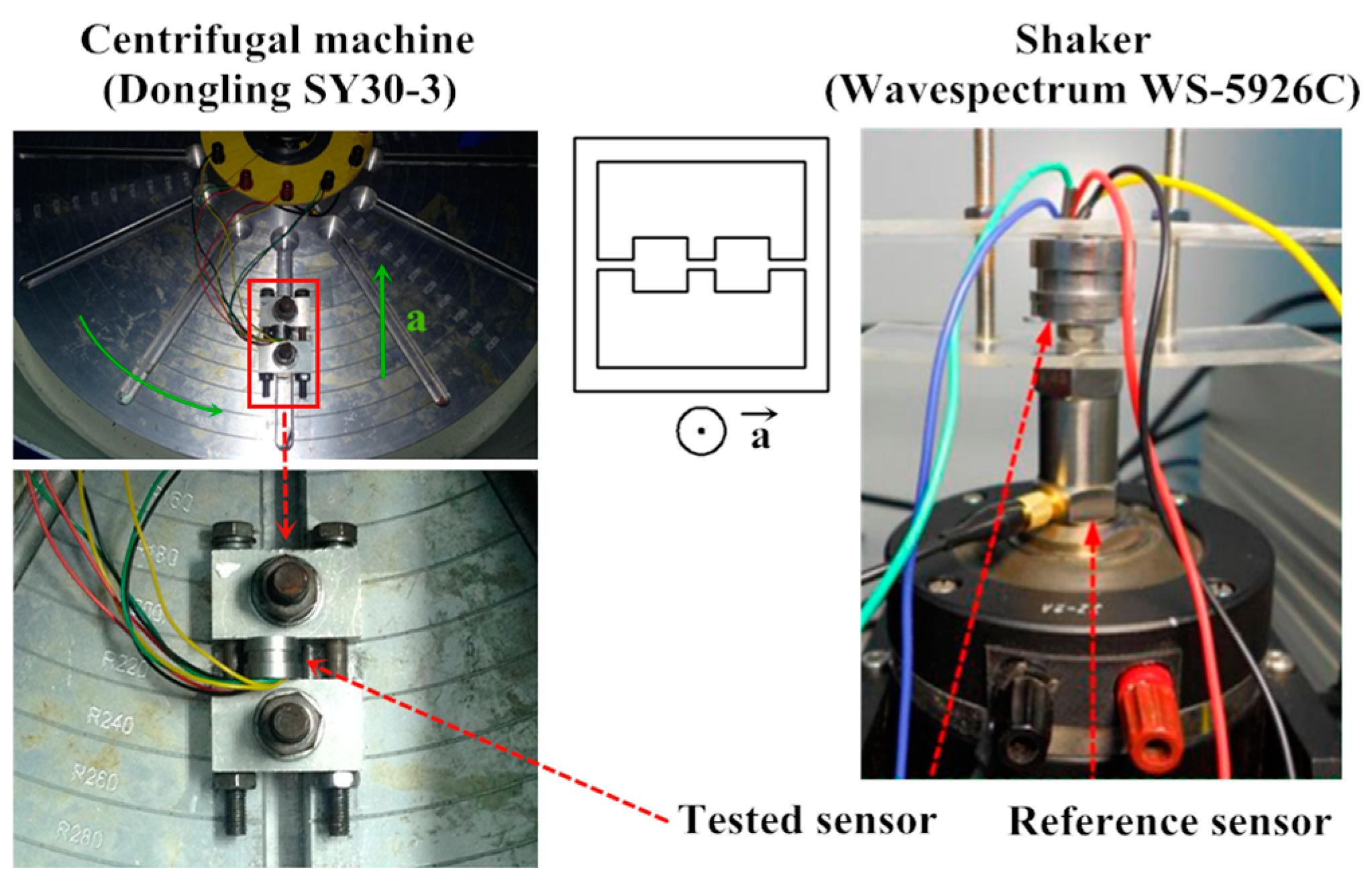



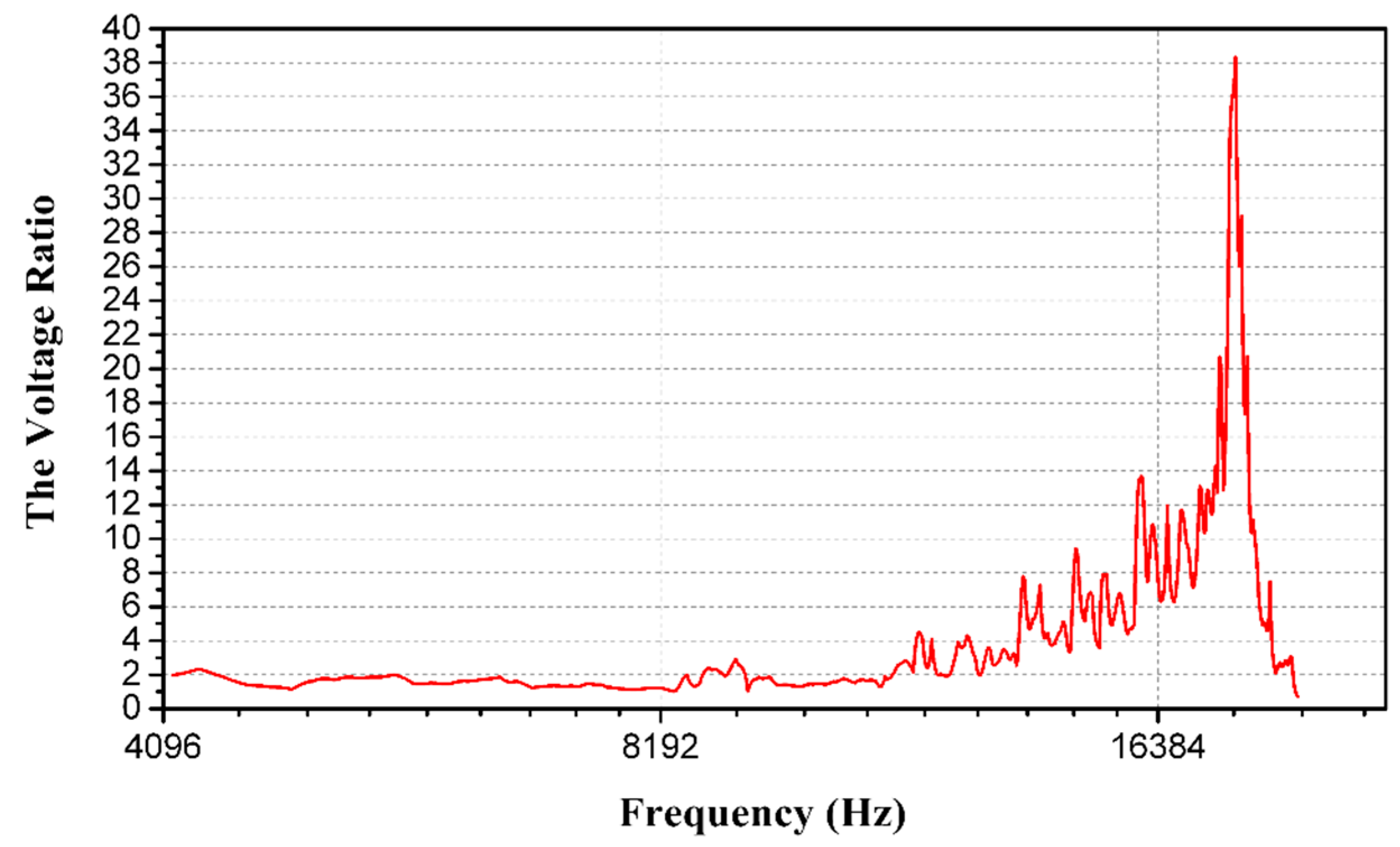
| Parameter | B | H | I | L | W | t |
|---|---|---|---|---|---|---|
| Dimension (μm) | 20–50 | 20–30 | 1500–1600 | 5400–5700 | 200–500 | 150–500 |
| Parameter | Value |
|---|---|
| Temperature (°C) | 20 |
| Supply voltage (V) | 3 |
| Zero point offset (mV) | 4.196 |
| Full scale span (mV) | 23.781 |
| Sensitivity (μV/V/Pa) | 17.339 |
| Nonlinearity (%FS) | 2.556 |
| Hysteresis (%FS) | 0.514 |
| Repeatability (%FS) | 0.759 |
| Accuracy (%FS) | 2.715 |
© 2016 by the authors; licensee MDPI, Basel, Switzerland. This article is an open access article distributed under the terms and conditions of the Creative Commons by Attribution (CC-BY) license (http://creativecommons.org/licenses/by/4.0/).
Share and Cite
Meng, X.; Zhao, Y. The Design and Optimization of a Highly Sensitive and Overload-Resistant Piezoresistive Pressure Sensor. Sensors 2016, 16, 348. https://doi.org/10.3390/s16030348
Meng X, Zhao Y. The Design and Optimization of a Highly Sensitive and Overload-Resistant Piezoresistive Pressure Sensor. Sensors. 2016; 16(3):348. https://doi.org/10.3390/s16030348
Chicago/Turabian StyleMeng, Xiawei, and Yulong Zhao. 2016. "The Design and Optimization of a Highly Sensitive and Overload-Resistant Piezoresistive Pressure Sensor" Sensors 16, no. 3: 348. https://doi.org/10.3390/s16030348






